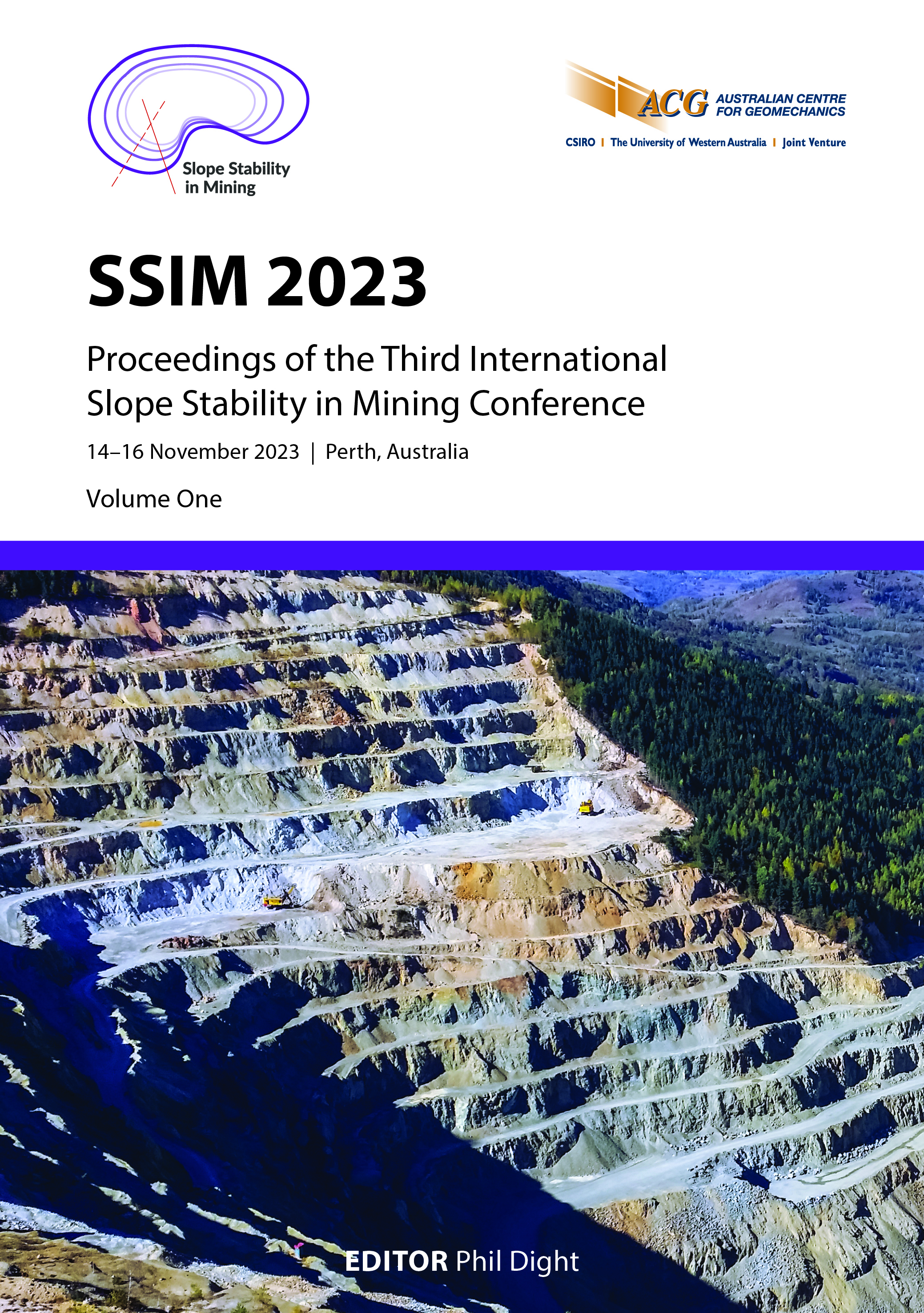Structural data collection as a key input for discrete fracture network analysis

|
Authors: Byrne, C; Zorzi, L; Rogers, S |
DOI https://doi.org/10.36487/ACG_repo/2335_24
Cite As:
Byrne, C, Zorzi, L & Rogers, S 2023, 'Structural data collection as a key input for discrete fracture network analysis', in PM Dight (ed.), SSIM 2023: Third International Slope Stability in Mining Conference, Australian Centre for Geomechanics, Perth, pp. 399-408, https://doi.org/10.36487/ACG_repo/2335_24
Abstract:
Accurate characterisation of the geometry and continuity of structural systems (joint, fault and vein systems) within porphyry deposits is essential during all stages of mine life. Structural systems associated with porphyry deposits are generally complex, with highly segmented fault systems, interdependencies between faults and dykes, and spatially varying vein mineralogies and intensities. These intricacies are a function of the deformational, rheological and hydrothermal history of the geological system. The generation of a comprehensive 3D geological interpretation tailored to geotechnical and hydrogeological designs and assessments requires a workflow that includes the development of a conceptual model, data collection and storage, quality control and interpretation of data. During the lifetime of an operational mine, the structural model should ideally be evolving into a comprehensive database that contains not only largescale faults (i.e. regional and mine scale) but also an insight into small-scale fabrics, represented by discrete fracture networks (DFN), that may be present in the rock mass. A significant quantity of structural information must be available to allow for the generation of DFN models for numerous fabrics in the rock mass, including open structures, mafic dykes and vein structures. The correlation between large-scale and small-scale structures is a novel modelling approach that has provided great insight into strategies for data collection and interpretation. This approach also gives a heightened level of clarity to the genetic and evolutionary relationship that can exist between structural systems and deposits themselves. This paper will present the methodology used to identify and delineate key structures, describe characterisation methodologies that have been applied, and present examples of how identification and characterisation of structural systems can successfully inform decision-making for mining operations.
Keywords: discrete fracture network, optimisation, workflow, data collection, stability, structural geology
References:
Bieniawski, ZT 1989, Engineering Rock Mass Classifications: A Complete Manual for Engineers and Geologists in Mining, Civil, and Petroleum Engineering, John Willey & Sons, New York.
Bonnet, E, Bour, O, Odling, NE, Davy, P, Main, I, Cowie, P & Berkowitz, B 2001, ‘Scaling of fracture systems in geological media’, Reviews of Geophysics, vol. 39, no. 3, pp. 349–383.
Dershowitz, WS & Herda, HH 1992, ‘Interpretation of fracture spacing and intensity’, Proceedings of the 33rd US Rock Mechanics Symposium.
Rogers, S, Elmo, D, Webb, G & Guajardo, C 2016, ‘DFN modelling of major structural instabilities in a large open pit for end-of-life planning purpose’, Proceedings of the 50th US Rock Mechanics Symposium.
© Copyright 2025, Australian Centre for Geomechanics (ACG), The University of Western Australia. All rights reserved.
View copyright/legal information
Please direct any queries or error reports to repository-acg@uwa.edu.au
View copyright/legal information
Please direct any queries or error reports to repository-acg@uwa.edu.au

